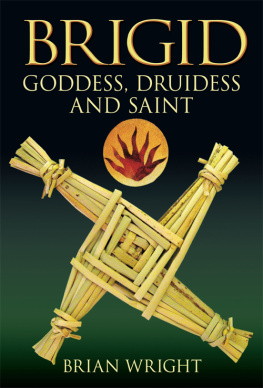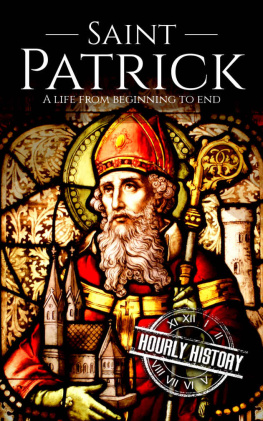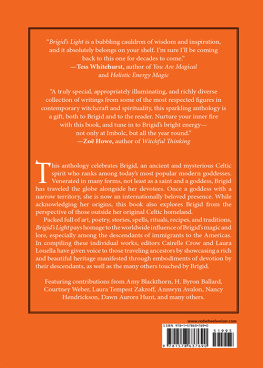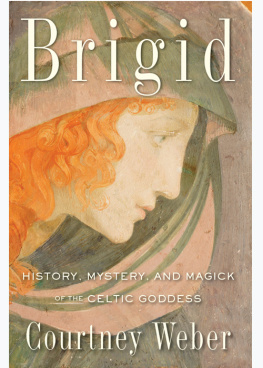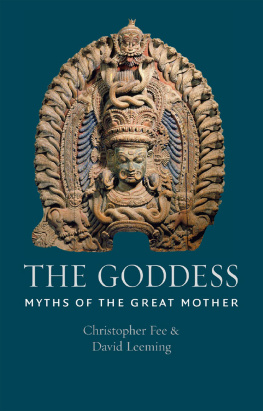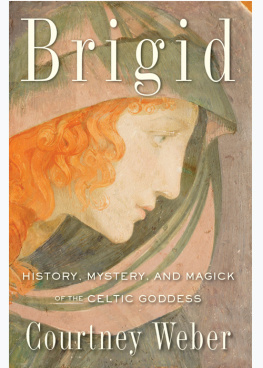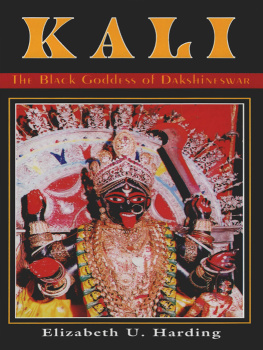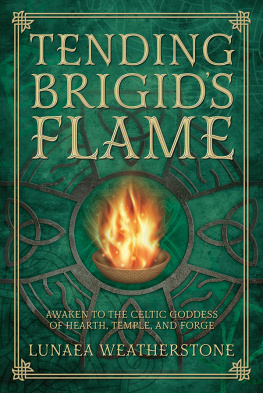BRIGID
BRIGID
GODDESS, DRUIDESS AND SAINT
BRIAN WRIGHT
First published in 2009
The History Press
The Mill, Brimscombe Port
Stroud, Gloucestershire, GL 5 2 QG
www.thehistorypress.co.uk
This ebook edition first published in 2011
All rights reserved
Brian Wright, 2009, 2011
The right of Brian Wright, to be identified as the Author of this work has been asserted in accordance with the Copyrights, Designs and Patents Act 1988.
This ebook is copyright material and must not be copied, reproduced, transferred, distributed, leased, licensed or publicly performed or used in any way except as specifically permitted in writing by the publishers, as allowed under the terms and conditions under which it was purchased or as strictly permitted by applicable copyright law. Any unauthorised distribution or use of this text may be a direct infringement of the authors and publishers rights, and those responsible may be liable in law accordingly.
EPUB ISBN 978 0 7524 7202 7
MOBI ISBN 978 0 7524 7201 0
Original typesetting by The History Press
Contents
Acknowledgements
Cldhanna Teoranta of Dublin for permission to reproduce the drawings of Brigids crosses on pages 95108; Mike Comer for all his help in checking the Gaelic used in this work and other advice; Lesley Delamont for permission to use the photograph of Brides Mound on page 45; Judith Dobie for permission to reproduce her drawing of the Anglo-Saxon chapel at Beckery on page 172; Clodagh Doyle of the National Museum of Ireland; Faber & Faber for permission to quote the extract from Seamus Heaneys poem on page 124; Seamus Heaney for permission to use an extract from his poem A Brigids Girdle for Adele; Prof. Philip Rahtz and Lorna Watts for permission to use the photograph on page 173; Dr Carole Reeves of the Wellcome Trust Centre for the History of Medicine; Anne Ross for permission to use the photograph on page 33; and Valerie Wright for the drawings on pages 11, 16, 69 and 112. I would also like to thank the following who gave information or help: Shelagh Addis; Ralph Brocklebank; Tracy Cutting; Dominic Dowling; Peter Gorry; Cedric Lodge; Richard and Anne Porter; and Peter Thorburn.
Introduction
There has been a lot of confusion about Brigid, who is unique in still being venerated today in Ireland, Europe and the USA as a goddess, as a saint and a mixture of the two. As a goddess she is often confused with a British deity called Brigantia, but the two are only distantly related, and Brighid is a purely Irish goddess. This work includes original research which, for the first time and, probably uniquely, dates the conception of a deity, explains why she was created and by whom. It explains how this goddess became a saint; and how events in first-century Britain were to lead to Ireland becoming unified into five provinces under a High King.
Some historians have dismissed the saint of the same name, the second most important Irish saint after St Patrick, as a fictitious character on the basis that she was merely a pagan goddess who was transmuted into a Christian saint. It was a Druidess who provided the link between the Goddess Brighid and St Brigid of Kildare, a real person, whose fame during her life was widespread, but whose reputation after her death grew over the next 1,400 years until her name was known throughout much of the western world and attracted many adherents to her cult.
Many of the characteristics of the goddess were later attributed to St Brigid, who is strongly connected with the fertility of crops, animals and humans, on the face of it an unlikely association for a virgin saint. Her special day, 1 February, the same as her goddess namesake, marks the beginning of spring in the Celtic calendar.
St Brigid probably has more traditional customs associated with her than any other saint, some of which date back to pre-Christian times. These were once practised in much of the western European Celtic world, and some, such as making Brigids crosses are still carried out today. There were strong links between Somerset and Ireland from the ninth century and there is an ancient tradition that St Brigid visited the county in 488 AD and left behind a number of relics, a story first recorded in 1120, and the origin of this belief is explained for the first time.
St Brigid had a strong connection with a large part of the natural world, ranging from cattle to carrots, which is covered in this work, as is the story of her relics, which were once widespread. Some still survive today, one being carried in procession at the Irish National Pilgrimage held each July to honour her.
Today Brigid is still venerated and celebrated by people throughout the world and continues to be a bridge between the pagan and Christian worlds as she was during her lifetime. This, one of the most comprehensive works on Brigid, combines early Celtic history, archaeology, tradition and folklore to give a truly fascinating insight into all aspects of this intriguing goddess-saint.
One
Who was the Goddess Brigantia?
The People of Brigantia
The Goddess Brighid is mistakenly regarded by many people as being exactly the same as another goddess, usually referred to at least in Britain by the name Brigantia, the Latin form of the British name Briganti. Brig means High One, and she seems to have been worshipped in other parts of the Celtic world, sometimes under different names such as Brigindo and Brigandu. Brigantia was so important to one British tribe that they named themselves after her, being known collectively as the Brigantes, a name derived from the singular form Brigans, which comes from the Celtic root word Brig, in this case meaning The High Ones. It was the political and military situation of this British kingdom in the first century AD that was to lead to the conception of the Goddess Brighid.
Another Celtic tribe, the Brigantii, who lived near Bregenz in Austria, also took their name from Brigantia and, like their British counterparts, equated her during the Roman period, with the goddess Minerva. Celts quite often traced their tribal descent from a divine ancestor, and so it seems the British Brigantes were conforming to an accepted tradition, and it may be that their overall leader, whether a king or a queen, would also have claimed descent from this goddess.
The Brigantes were numerically the largest tribe in Britain, occupying what is now the modern six counties of northern England, stretching from coast to coast with their southern boundary probably running from the River Mersey to the River Humber, then curving southwards to include the Derbyshire Peak District, with their northern boundary probably extending beyond the line of Hadrians Wall. Covering a huge area, this large tribe was divided into a number of sub-groups or minor kingdoms, which archaeology suggests probably numbered fifteen, occupying favourable valleys and areas of lighter soils but separated by areas of hill, mountain, moorland and bog.
The names of six of these sub-kingdoms are known from the Romano-British period: the Gabrantovices in North Yorkshire, the Setantii in Lancashire, the Textoverdi in the upper valley of the Tyne, the Lopocares around Corbridge, the Carvetii in the upper Eden Valley and the Latenses. While each sub-kingdom revered their own regional deities they were unified by the worship of one High Goddess, Brigantia, who took precedence over the local male gods, a system that was reflected in their social structure, having a High King or Queen over all their sub-kings. There is evidence that the concept of a Great Goddess or a Mother Goddess that was above all the lesser or regional deities was known in a large part of the Celtic world.

